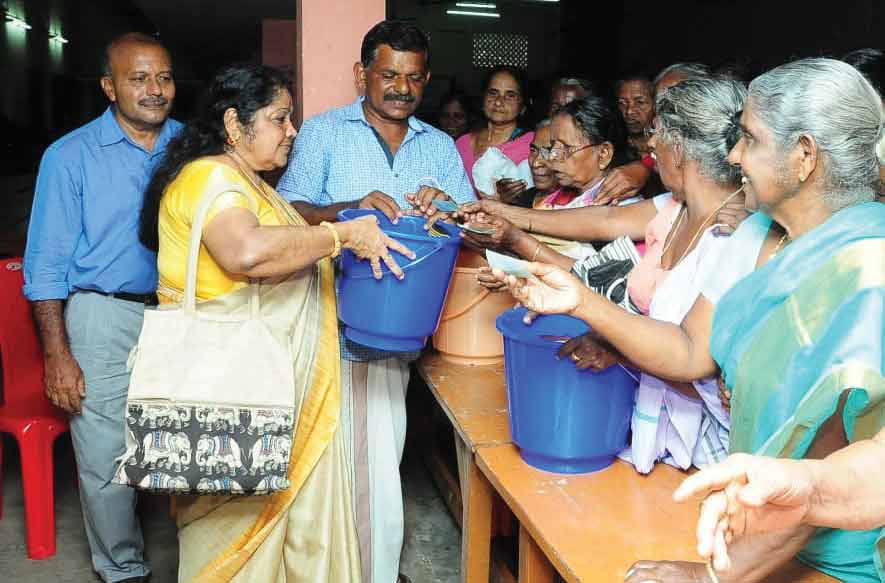Who can forget the infamous floods of August 2018 that washed away lives and livelihoods of people of Kerala and Karnataka? Kuttanad and Alleppey were among the places in Kerala that experienced the deluge on a massive scale and Rotarians across the country rose to the occasion and reached out to the flood victims in both the States with money and material. Even before life could return to normalcy, heavy rains lashed Kerala this August too. “Even now, it is a nightmare for many people here to see dark clouds gather,” said Vijayalakshmi Nair, a member of RC Alleppey, RID 3211.

The club under her leadership as Project Coordinator is reaching out in phases to rehabilitate flood victims of Kayalpuram, a residential locality with 1,500 families, in the heart of Kuttanad. “The place is close to our hearts because we witnessed the worst scenario here during the downpour,” she said. The Rotarians waded through the rainwater or sailed on boats to move people to safety, or reach food and water for the stranded victims.
“We have now adopted the locality and have helped to repair eight badly damaged houses in the first phase.” One new house was constructed and handed over to a needy physically-challenged person. Rainwater harvest facility and RO plants were set up. Plywood sheets were given to households to mend cots damaged in the floods.
In the next phase, a series of mega medical camps were organised to treat residents for waterborne diseases and general ailments. Mattresses, blankets, household articles, groceries and stationery items for schoolchildren were distributed.
The third phase saw morale-building sessions for the residents. “The psychosocial aftermath due to loss of loved ones, property, and displacement from homes was alarming. Sleeplessness and nightmares were common complaints from people here and we arranged workshops to boost confidence especially in children and young adults,” said P O Thomas, another club member.
More recently, the Rotarians distributed jackfruit saplings for each household to enliven the environment with native trees. Since plantain and paddy cultivation were widely practised in the area, these saplings, along with manure were distributed to the farming residents.





